Here we are less than a week away from the coronation of King Charles III and Queen Consort Camilla! If you haven’t checked out our guide to the coronation ceremony, you can read more about that here. Today we’re going to take a deep dive into the coronation regalia, along with the symbolism infused into each piece.

The Imperial State Crown
Talk about a show-stopper. The Imperial State Crown is the crown the monarch wears at the very end of the ceremony. Though the crown has existed in various forms for nearly six centuries, the current iteration was created in 1937, and is also worn during State Openings of Parliament. Comprised of over 2900 precious jewels, including Cullinan II, St. Edward’s Sapphire, The Black Prince’s Ruby, and the Stuart Sapphire, this crown symbolizes the autonomy of the United Kingdom as an nation, not subject to any other earthly powers.

St. Edward’s Crown
St. Edward’s Crown is used to formally crown the Monarch, and is worn throughout the duration of the ceremony. This crown dates to the coronation of King Charles II in the 1661, and features 444 precious stones. The design is based on a previous version of the crown worn by Edward the Confessor, which was kept at Westminster Abbey as a holy relic and destroyed in the English Civil War. The current version has been used in coats of arms and other heraldic emblems across the U.K., and symbolizes the sovereignty of the Monarch as well as his role as head of the Church of England.

Queen Mary’s Crown
Queen Mary’s Crown, as the name suggests, was designed for the coronation of Queen Mary in 1911. This is a break with tradition, as Queen Consorts since the 18th century have commissioned the creation of new tiaras for their coronations. The crown is currently undergoing minor changes, including the additions of some jewels from the late Queen Elizabeth II’s private jewelry collection. The arches of this crown are also removable, allowing it to be worn as a circlet in subsequent formal occasions.

The Orb
The Sovereign’s Orb also dates to 1661, and is a symbol of the Christian world. The Orb is separated into three sections by bands of precious and semi-precious jewels, with each section representing one of the three continents known during the medieval period during which the Orb was created.
Sceptres
The Sovereign’s Sceptres both date to 1661 and represent different roles of the Monarch.
The Sceptre with Cross symbolizes the Monarch’s temporal authority. It has It has undergone several redesigns and enhancements throughout the years, with the most significant being the addition of the Cullinan Diamond, the largest diamond in the world, in 1910.
The Sceptre with Dove, also known as the Rod of Equity & Mercy, symbolizes the Monarch’s spiritual role, with the dove representing the Holy Ghost of the Christian faith.
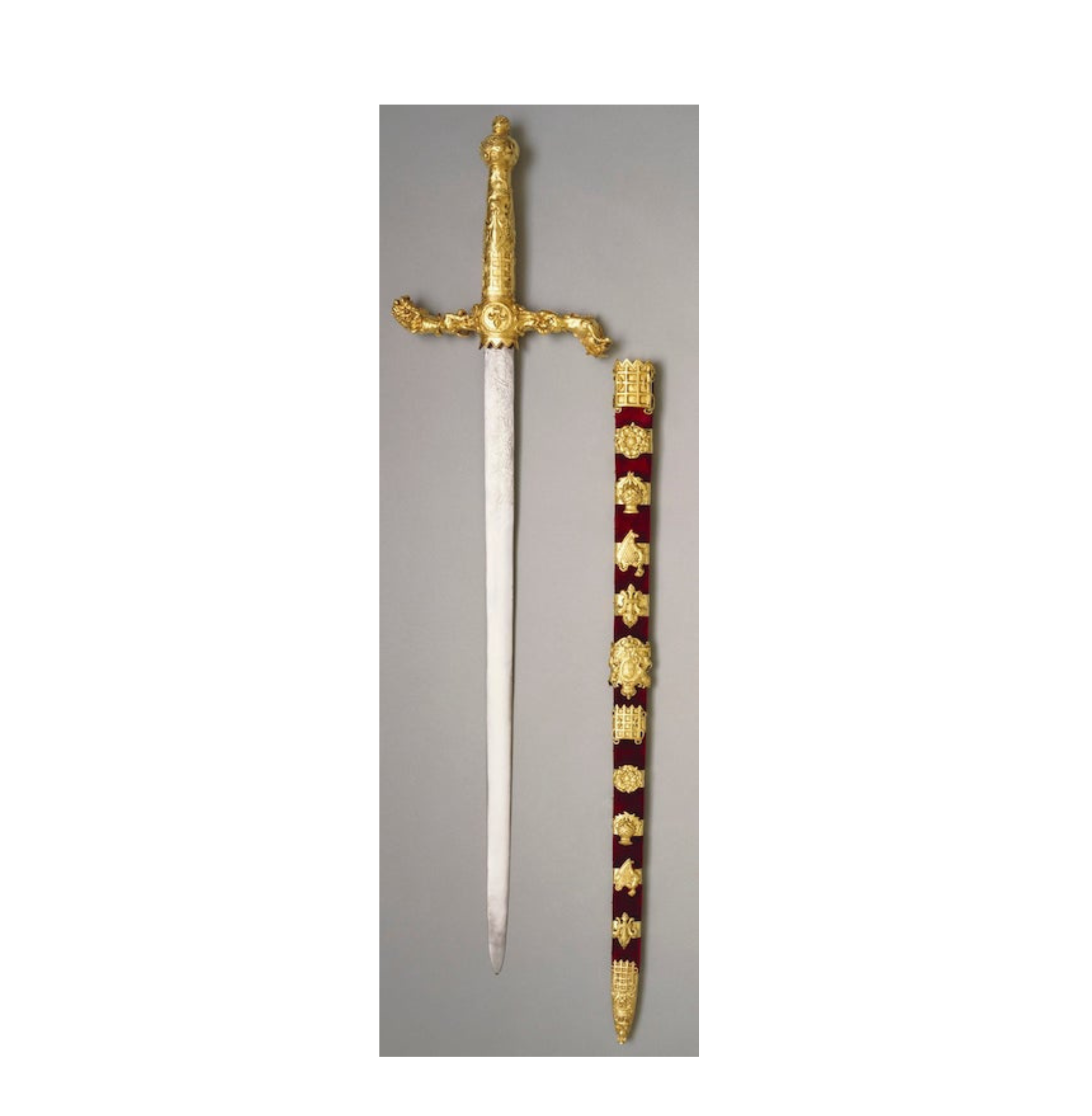
Sword of State
The Sword of State is carried before the Monarch at the coronation and other formal events (such as the Opening of Parliament) and is a symbol of his authority. The sword itself was designed for Charles II, with the scabbard first belonging to William III.

Coronation Swords
Three additional swords are carried during the coronation procession: The Sword of Temporal Justice, representing the Monarch’s role as Head of the Armed Forces; Sword of Spiritual Justice, symbolizing his role as Head of the Church of England and Defender of the Faith; and Sword of Mercy, representing his mercy. The three appear very similar, but the Sword of Mercy, or Curtana, displays a notable and symbolic blunted tip.
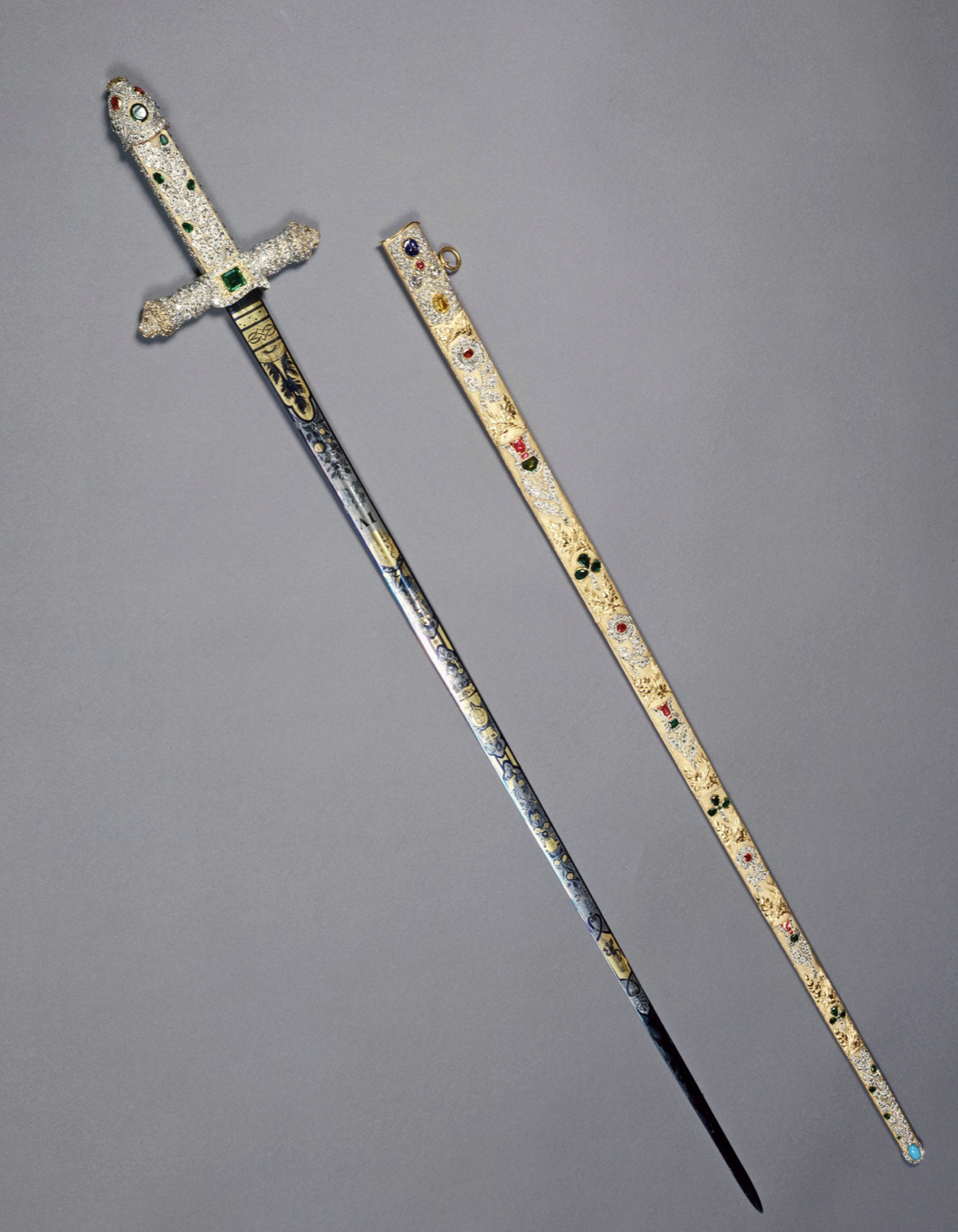
Sword of Offering
The Sword of Offering is a relatively newer sword, dating to the Coronation of George VI in 1821. Elaborately decorated with nearly 3500 precious and semi-precious stones and traditional symbols of the United Kingdom, the sword is blessed during the investiture by the Archbishop of Canterbury, who presents it to the monarch, admonishing him to use it for the protection of good and punishment of evil.
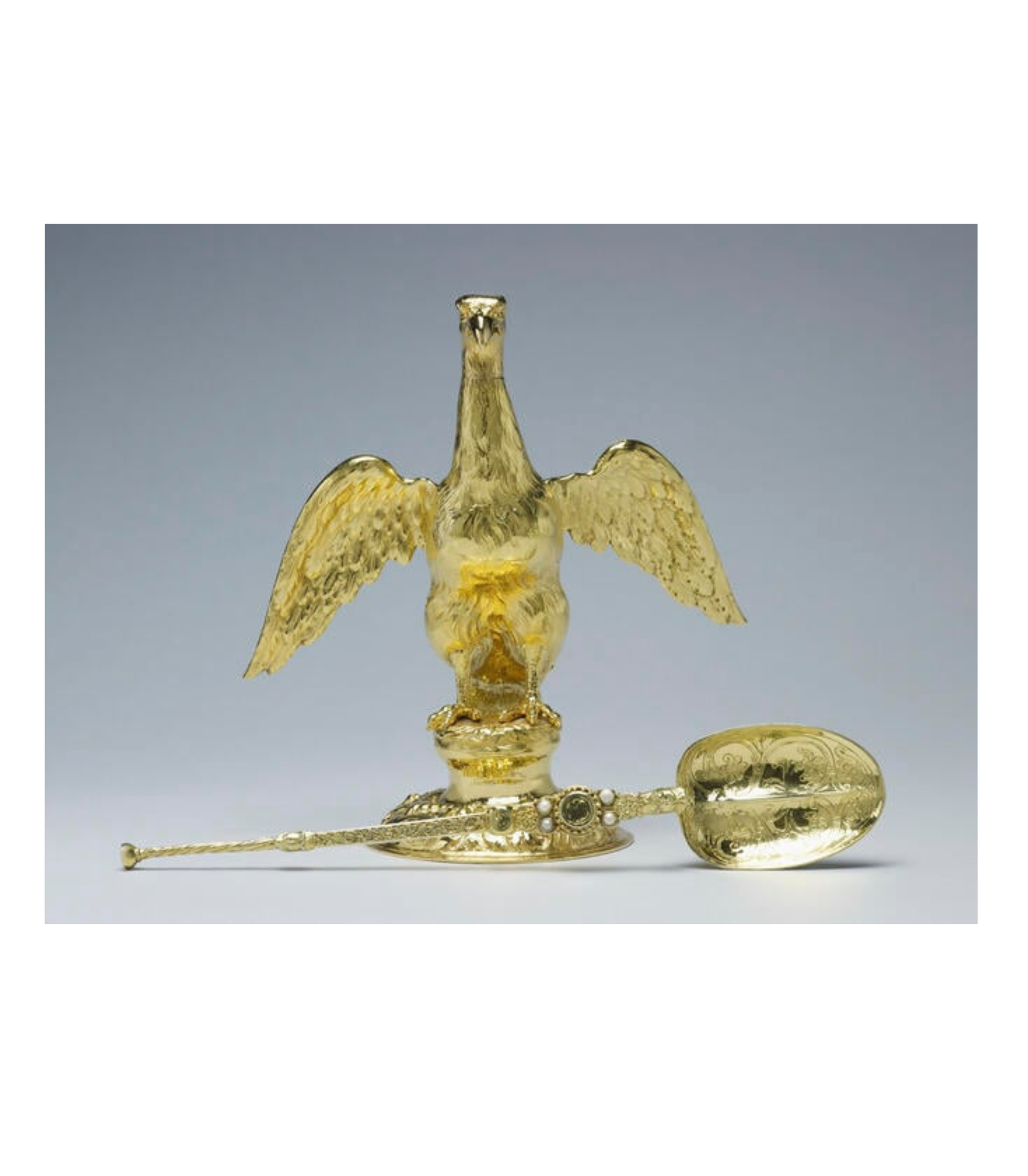
Chrism Oil, Ampulla, &
Coronation Spoon
The Chrism oil, which is made of olive oil and a blend of essential oils (and for the first time in history, is cruelty-free) was consecrated in a special ceremony in Jerusalem and is used to anoint the Monarch during the only private portion of the ceremony (it takes place behind an elaborately decorated screen).
The vessel for holding the oil, known as the Ampulla, is in the shape of an eagle; the design was inspired by a legend in which the Virgin Mary appeared to Saint Thomas Becket, and presented to him a golden eagle and vial of oil for anointing future Kings of England.
The Coronation Spoon is the oldest piece of regalia used in the ceremony, dating to the late 12th century, and first used for the Coronation of James I in 1603.
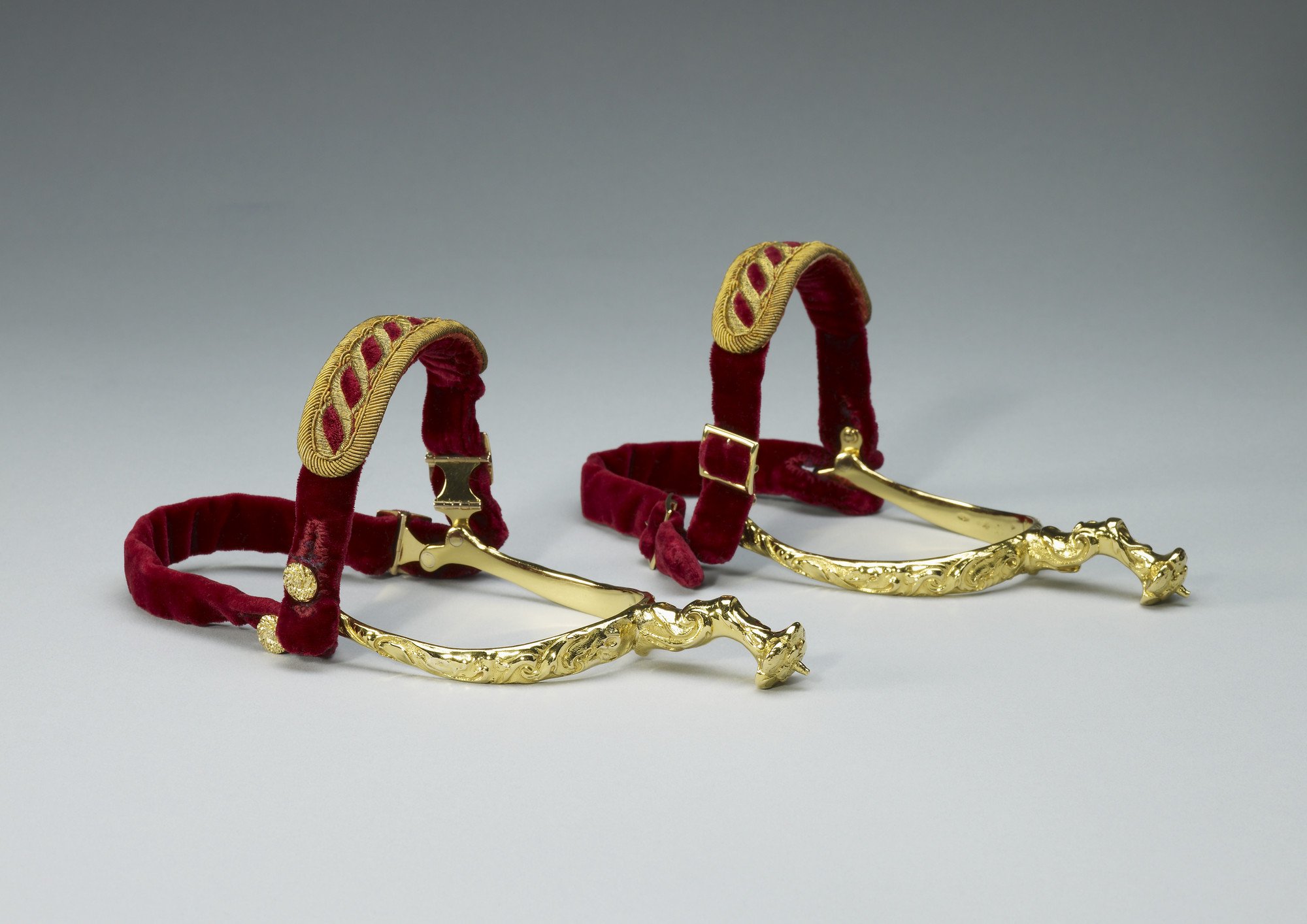
Spurs
The use of spurs in coronation ceremonies in the U.K. dates to 1189 with Richard I. These spurs, however, like many other pieces of regalia, date to the coronation of Charles II in 1661, and symbolize knighthood.
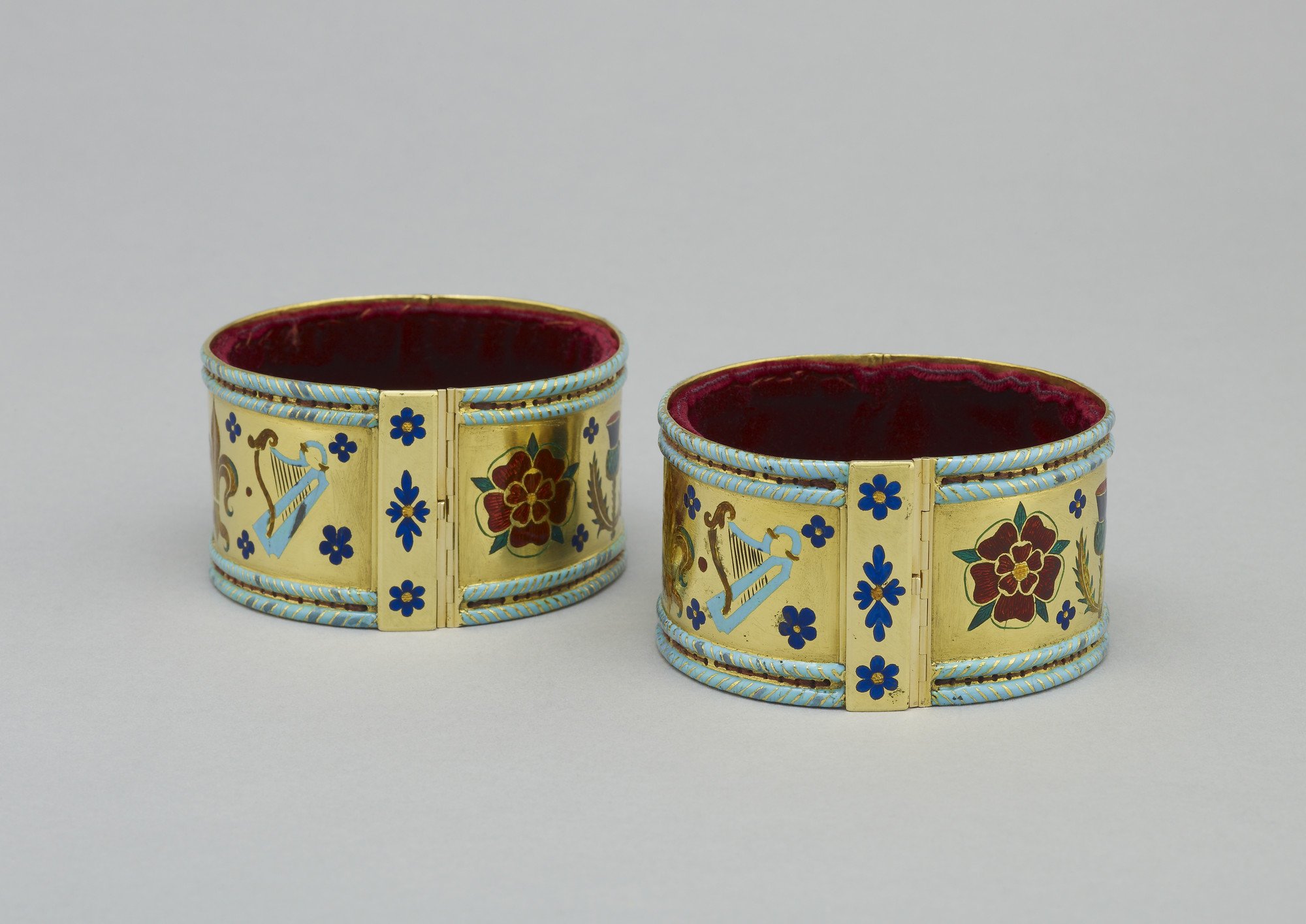
Armills
The Armills, a type of medieval-style bracelet, are thought to symbolize military leadership and knighthood. This pair dates to 1661 and have been referred to as “bracelets of sincerity and wisdom” during previous United Kingdom coronation ceremonies.

Rings
The Sovereign’s ring was created for the Coronation of King William IV in 1831. Made up of a sapphire layered under a cross composed of rubies all encircled by diamonds, the ring is a symbol of kingly dignity.
The Queen Consort’s ring was created for Queen Adelaide, consort of William IV, an is made of a single large ruby encircled by diamonds, with additional rubies on the band.
And there you have it—the Coronation Regalia, with all its history and symbology!

Wanna see some of these stunning pieces in person? Let me help you plan your very own trip to get up close and personal with the Crown Jewels! Click here to schedule a consultation!




